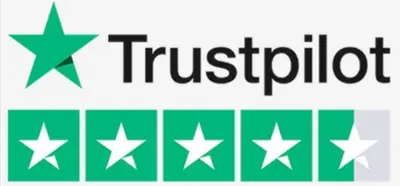Though interconnected, the sales funnel and the marketing funnel exhibit distinctive characteristics that cater to specific phases of the customer journey. While they are both vital for brands and businesses, marketers need to understand the difference between the sales and marketing funnel.
Marketing Funnel Explained
The marketing funnel is a strategic framework that illustrates the stages a potential customer goes through before purchasing. With its five essential phases, the marketing funnel provides companies with a road map to lead prospects from first awareness to devoted clientele.
Awareness Stage
The first step in the process is to make a product or service more widely known. Businesses leverage branding, advertising, content marketing, and social media engagement to present themselves to prospective clients.
Interest Stage
After raising awareness, the emphasis switches to piquing interest and encouraging participation. In this phase, instructional materials are distributed, and email campaigns, webinars, and social media engagement are encouraged.
Consideration Stage
The goal of the consideration stage is to present the good or service as a workable answer to the potential customer’s needs. Some strategies include submitting case studies, demonstrating products, providing free trials, and producing comparative content.
Intent Stage
Targeted offers, retargeting advertisements, and tailored communication are used in the intent stage to move the prospect closer to making a purchase. Companies work to ensure that a potential customer is serious about purchasing.
Purchase Stage
The purchase phase is the last, during which the prospect becomes a customer. At this point, incentives, sales, and a simple buying process are essential components to help the decision to buy.
Building brand awareness, fostering favorable brand perceptions, and nurturing leads depend on the marketing funnel. Businesses can connect with potential customers, offer value, and steer them toward becoming devoted patrons by methodically engaging them at every stage. Companies can effectively tailor their marketing efforts thanks to this holistic approach, which enables a thorough understanding of the customer journey.
Sales Funnel Explained
A focused framework known as the sales funnel describes the steps a prospective customer must take to proceed with a purchase. Its four main stages provide businesses with a targeted road map to lead prospects from the point of first awareness to the critical turning point of becoming a customer.
Awareness Stage
The main objective at the top of the funnel is to raise potential customers’ awareness of a good or service. Getting the target audience’s attention entails outreach, strategic advertising, and driving the first point of contact between the brand and the consumer.
Interest Stage
The interest stage builds on awareness and attempts to increase the prospect’s level of involvement. Product demonstrations, in-depth presentations, and the distribution of thorough information are all part of sales activities meant to maintain and increase interest levels.
Decision Stage
The goal of the decision stage is to help the prospect make an informed decision. To move the opportunity closer to a purchase, sales activities at this point include addressing objections, offering customized solutions, and assisting in the decision-making process.
Action Stage
The sales funnel’s last stage, action, is when a prospect moves from consideration to becoming a paying customer. This phase involves concluding the agreement, handling the financial transactions, and providing after-sale assistance to strengthen the clientele.
Personalized approaches and focused sales activities are critical components of the sales funnel’s conversion of leads into customers. It is a dynamic process that allows companies to interact with prospective clients at every turn, guaranteeing a targeted and efficient journey that increases the chance of profitable conversions.
Sales Funnel and Marketing Funnel: Key Differences
The sales funnel is a targeted model that converts leads into customers. With phases like awareness, interest, decision, and action, it guides prospective buyers through the critical steps involved in purchasing.
This funnel’s characteristics are:
- Direct sales efforts.
- One-on-one conversations.
- A focused effort to resolve objections and assist the customer in making decisions.
The sales funnel works quickly to secure a purchase effectively. The marketing funnel, on the other hand, adopts a more comprehensive viewpoint and covers the entire customer journey from awareness to conversion. The marketing funnel, which has stages such as awareness, interest, consideration, intent, and purchase, focuses on increasing brand awareness.
It employs diverse strategies such as branding, advertising, content marketing, and social media engagement to establish a presence in the consumer’s consciousness. The marketing funnel adopts a longer-term approach, emphasizing the cultivation of trust and credibility over time.
The tasks that each funnel ranks as priorities are one crucial distinction. To lay the groundwork for the upcoming sales funnel, the marketing funnel participates in initiatives that increase awareness, impart knowledge, and cultivate connections. Building on the foundation created by the marketing funnel, the sales funnel focuses on activities more directly related to closing deals, personalization, and overcoming objections.
Their orientation is another way that they differ. The marketing funnel is focused on creating a brand presence and fostering relationships. It aims to build relationships with potential customers by cultivating a favorable brand perception.
The goal of the sales funnel is to close deals and turn leads into customers. Using tactics specific to each prospect, it focuses on the critical junctures in the buying process. There are also differences in the timeframes linked to each funnel. The marketing funnel entails building ties and brand loyalty gradually. The sales funnel reacts to the prospect’s needs faster and moves the lead quickly toward conversion.
These funnels work together as part of a successful business plan. The marketing funnel prepares the ground by raising awareness and generating interest and facilitates a seamless transition to the sales funnel.


